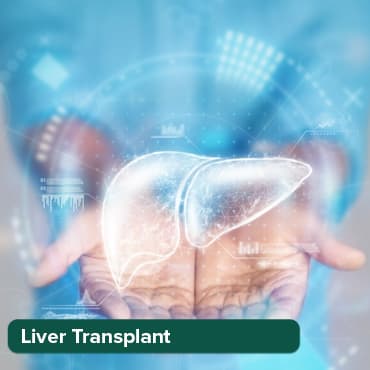
PET Scan for Cancer Diagnosis and Staging
11 May, 2023
 Obaidullah Junaid
Obaidullah JunaidCancer is one of the leading causes of death worldwide and early detection is essential for successful treatment. One of the most important tools for cancer diagnosis and grading is the PET scan. This blog explains what a PET scan is, how it works, and how it is used for cancer diagnosis and staging.
What is a PET scan?
PET stands for Positron Emission Tomography. This is a type of imaging technique that uses small amounts of radioactive substances called radiotracers to create detailed pictures inside the body. Radiotracers are injected intravenously, swallowed, or inhaled, depending on the part of the body to be examined. Radiotracers travel throughout the body and accumulate in areas of high metabolic activity. B. Cancer cells.
A PET scanner detects the radiation emitted by the radiotracer and creates his three-dimensional image of the distribution of the radiotracer in the body. These images help doctors determine the location, size, and extent of the cancer.
Transform Your Beauty, Boost Your Confidence
Find the right cosmetic procedure for your needs.

We specialize in a wide range of cosmetic procedures

How does PET scan work?
PET scans work by detecting radiation emitted by radiotracers. Radiotracers used in PET scans are typically sugars such as: Glucose mixed with a small amount of radioactive material such as B. Fluorine-18. Cancer cells have a higher metabolic rate than normal cells, so they consume more sugar. When radioactive tracers are injected into the body, they are taken up by cancer cells and accumulate in tumors.
A PET scanner detects the radiation emitted by a radiotracer and creates a three-dimensional image of the radiotracer's distribution within the body. The images are colour-coded to show areas of high and low metabolic activity. Areas of high metabolic activity, such as cancer cells, appear as bright spots in the image.
What are PET scans used for?
- Determining cancer location, size, and extent
- Determine if cancer has spread to nearby lymph nodes or other organs
- Monitor the effectiveness of cancer treatments
- Detection of cancer recurrence after treatment
PET scans are especially useful for detecting cancer that has spread to other parts of the body. This is because cancer cells have a higher metabolic rate and consume more sugar than normal cells. When radioactive tracers are injected into the body, they are taken up by cancer cells and accumulate in tumours. This makes it easier to find cancer that has spread to other parts of the body.
PET scans can also be used to guide cancer treatment. For example, if a PET scan shows that cancer has spread to nearby lymph nodes, your doctor may recommend radiation therapy to the lymph nodes to keep the cancer from spreading further.
How is a PET scan done?
Prior to a PET scan, patients are asked to fast for several hours to ensure their blood sugar levels are low, as high blood sugar levels can affect scan accuracy. Patients are also asked to avoid strenuous physical activity for 24 hours prior to the scan.
During the scan, the patient lies on a table that slides into her PET scanner. Radiotracers are injected intravenously, swallowed, or inhaled, depending on the part of the body to be examined. The patient must lie still during the scan, and the scan usually takes 30 minutes to an hour for her.
After scanning, the radioactive tracer is naturally degraded and eliminated from the body. Patients may be asked to drink plenty of fluids to help flush the radiotracer from the system.
Are there any risks associated with PET scans?
Most popular procedures in India
Atrial septal defect
Upto 80% off
90% Rated
Satisfactory

Coronary Angiogram a
Upto 80% off
90% Rated
Satisfactory

Coronary Angiogram C
Upto 80% off
90% Rated
Satisfactory

Liver Transplant
Upto 80% off
90% Rated
Satisfactory

Total Hip Replacemen
Upto 80% off
90% Rated
Satisfactory

PET scan:-it is generally safe, but like any medical procedure, it carries some risks. Although the radiation exposure from PET scans is relatively low, patients who are pregnant or breastfeeding should consult their doctor before undergoing a PET scan.
Some people have allergic reactions to the radiotracers used in PET scans. Symptoms of an allergic reaction include hives, itching, and difficulty breathing. Patients should tell their doctors if they have had allergic reactions to drugs or contrast media in the past.
How accurate are PET scans for cancer diagnosis and staging?
PET scans are highly accurate in detecting and staging cancer. However, they are not perfect and there is a small chance of inaccurate PET scan results. A potential limitation of PET scanning is that it may not detect very small tumours. In addition, some cancers, such as prostate cancer, do not show up well on PET scans, such as: To improve the accuracy of PET scans, doctors can combine them with other imaging tests, such as her CT or MRI scans. This will give us a more detailed picture of the location and extent of the cancer.
What happens after a PET scan?
After the PET scan the patient has to wait for the results. A radiologist reviews the images and sends a report to the patient's primary care physician. Depending on the scan results, your doctor may recommend additional tests or procedures to confirm the diagnosis and determine the best course of treatment.
If a PET scan shows cancer, your doctor may recommend a biopsy to confirm the diagnosis. A biopsy is the removal of a small sample of tissue from a tumour for examination under a microscope.
If cancer is confirmed, the doctor will determine the stage. Staging is the process that describes how advanced the cancer is and how far it has spread. This information is used to determine the best course of treatment.
PET scans are important tools for cancer diagnosis and staging. A small amount of radioactive material is used to create detailed pictures of the inside of the body. PET scans help doctors determine the location, size, and extent of cancer, monitor the effectiveness of treatment, and detect cancer recurrence after treatment. Although PET scans are generally safe, there are some risks involved, so patients should check with their doctor before having her PET scan. Although PET scans are highly accurate in detecting cancer and determining staging, they are not perfect and there is a small chance of inaccurate PET scan results. Overall, PET scans are an important tool for cancer diagnosis and staging, helping doctors plan the best treatment for their patients.
Wellness Treatment
Give yourself the time to relax
Lowest Prices Guaranteed!

Lowest Prices Guaranteed!




